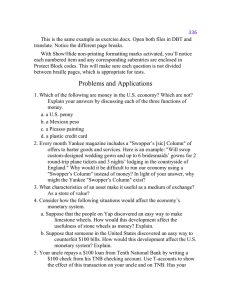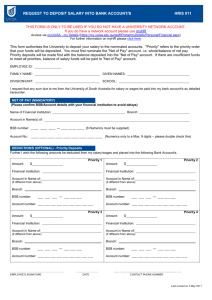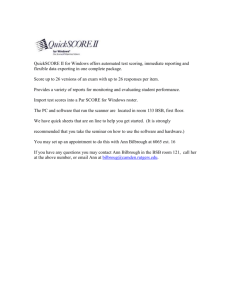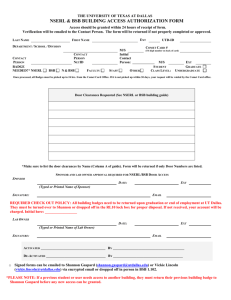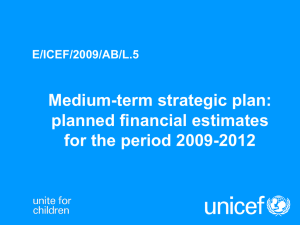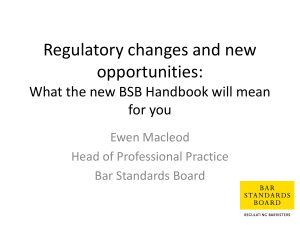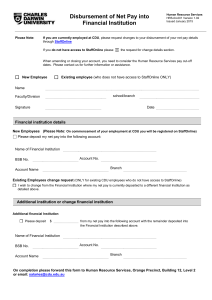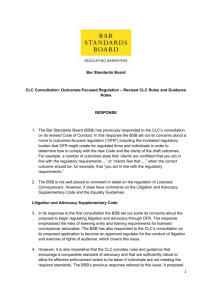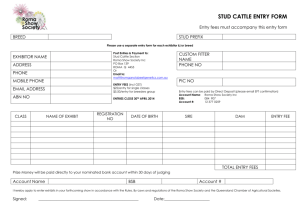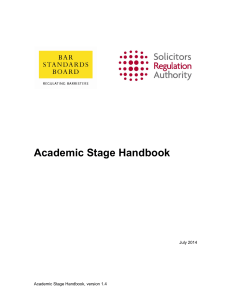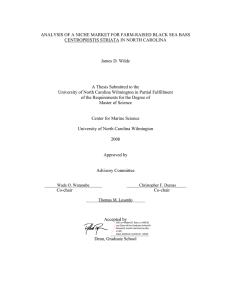exercise - Duxbury Systems, Inc.
advertisement
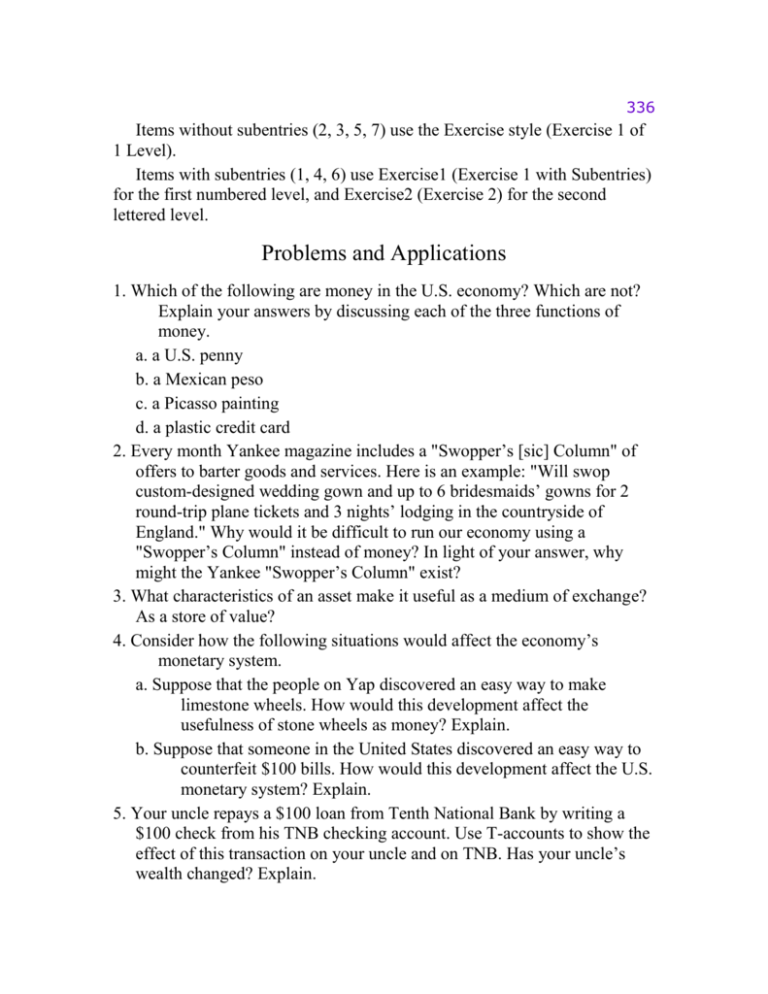
336 Items without subentries (2, 3, 5, 7) use the Exercise style (Exercise 1 of 1 Level). Items with subentries (1, 4, 6) use Exercise1 (Exercise 1 with Subentries) for the first numbered level, and Exercise2 (Exercise 2) for the second lettered level. Problems and Applications 1. Which of the following are money in the U.S. economy? Which are not? Explain your answers by discussing each of the three functions of money. a. a U.S. penny b. a Mexican peso c. a Picasso painting d. a plastic credit card 2. Every month Yankee magazine includes a "Swopper’s [sic] Column" of offers to barter goods and services. Here is an example: "Will swop custom-designed wedding gown and up to 6 bridesmaids’ gowns for 2 round-trip plane tickets and 3 nights’ lodging in the countryside of England." Why would it be difficult to run our economy using a "Swopper’s Column" instead of money? In light of your answer, why might the Yankee "Swopper’s Column" exist? 3. What characteristics of an asset make it useful as a medium of exchange? As a store of value? 4. Consider how the following situations would affect the economy’s monetary system. a. Suppose that the people on Yap discovered an easy way to make limestone wheels. How would this development affect the usefulness of stone wheels as money? Explain. b. Suppose that someone in the United States discovered an easy way to counterfeit $100 bills. How would this development affect the U.S. monetary system? Explain. 5. Your uncle repays a $100 loan from Tenth National Bank by writing a $100 check from his TNB checking account. Use T-accounts to show the effect of this transaction on your uncle and on TNB. Has your uncle’s wealth changed? Explain. 6. Beleaguered State Bank (BSB) holds $250 million in deposits and maintains a reserve ratio of 10 percent. a. Show a T-account for BSB. b. Now suppose that BSB’s largest depositor withdraws $10 million in cash from her account. If BSB decides to restore its reserve ratio by reducing the amount of loans outstanding, show its new Taccount. 337 c. Explain what effect BSB’s action will have on other banks. d. Why might it be difficult for BSB to take the action described in part (b)? Discuss another way for BSB to return to its original reserve ratio. 7. You take $100 you had kept under your pillow and deposit it in your bank account. If this $100 stays in the banking system as reserves and if banks hold reserves equal to 10 percent of deposits, by how much does the total amount of deposits in the banking system increase? By how much does the money supply increase?
